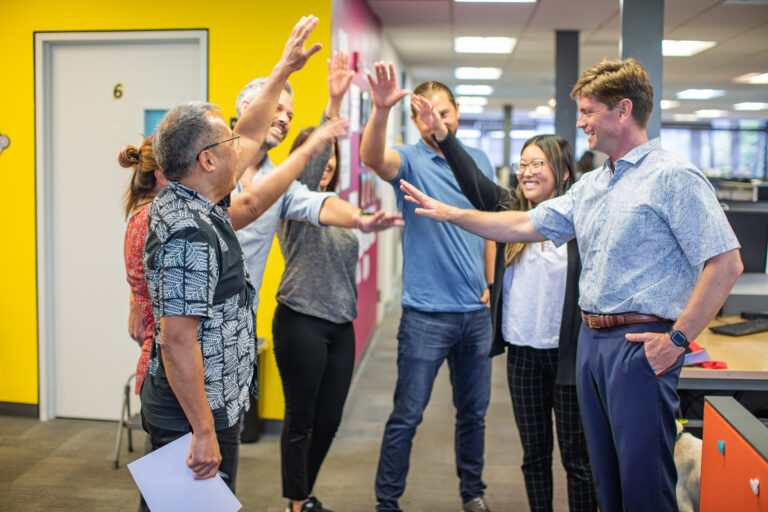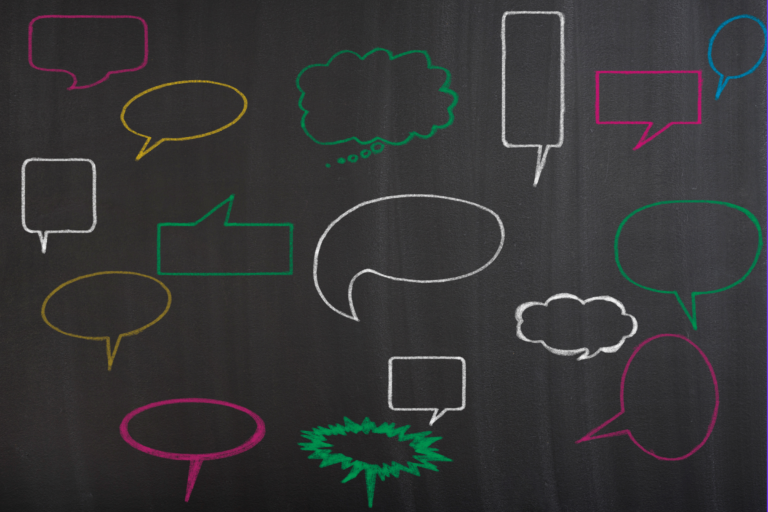4 Tips to Improve Employee Onboarding and Drive Productivity
Did you know that an effective employee onboarding program can improve time to productivity by 60%?
Today, Hawaii’s most effective leaders are revisiting their new employee onboarding experience to more strategically align it with the workplace environment they want to build, the employee performance they desire to see, and the business outcomes they seek to drive.
To see what new approaches Hawaii leaders are exploring, we recently sat down with Tiera Covington, owner of Integrated Facility Services Hawaii, for a candid conversation about managing employees in her organization – starting from day one, through day 30, day 90, and beyond. In our conversation with Tiera, we got to hear a lot about her company’s employee onboarding process and the role of ongoing and purposeful communication in driving performance expectations and business outcomes.
Here are some of the employee performance tips Tiera shared with us:
1. Add a CEO luncheon to your employee onboarding process
When Tiera revamped the company’s employee onboarding process, one thing she added was a monthly luncheon. It was an opportunity for Tiera to get to know her new workers on a personal level but also for them to hear her founding story and vision for the business. “We’ll go around the table and I’ll ask them what is your “why” for coming to work each day? Maybe they want to buy a house or simply support their family. Whatever it is, I want to show them how we can support their why by working for us,” says Tiera. “It’s also my opportunity to share the vision I have for the company, how we got where we are today, where we want to go in the next ten years, and most importantly, how our employees play an important part in helping us get there,” she adds. “Employees have to hear these things over and over again for it to really begin to stick.”
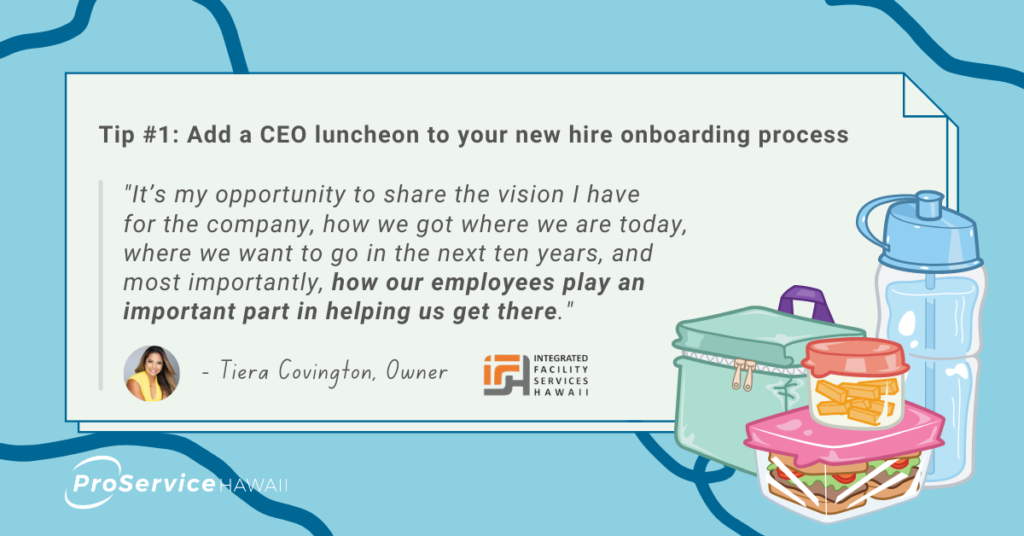
2. Incorporate a team member expectation agreement on day one
Tiera also shared that her company incorporates a team member expectation agreement on an employee’s first day of work as a critical component of managing employee performance. “It’s essentially a form that our supervisors review with each new hire that clearly articulates what our expectations are for them and then also what they can expect in return from their supervisors and from us as a company,” says Tiera.
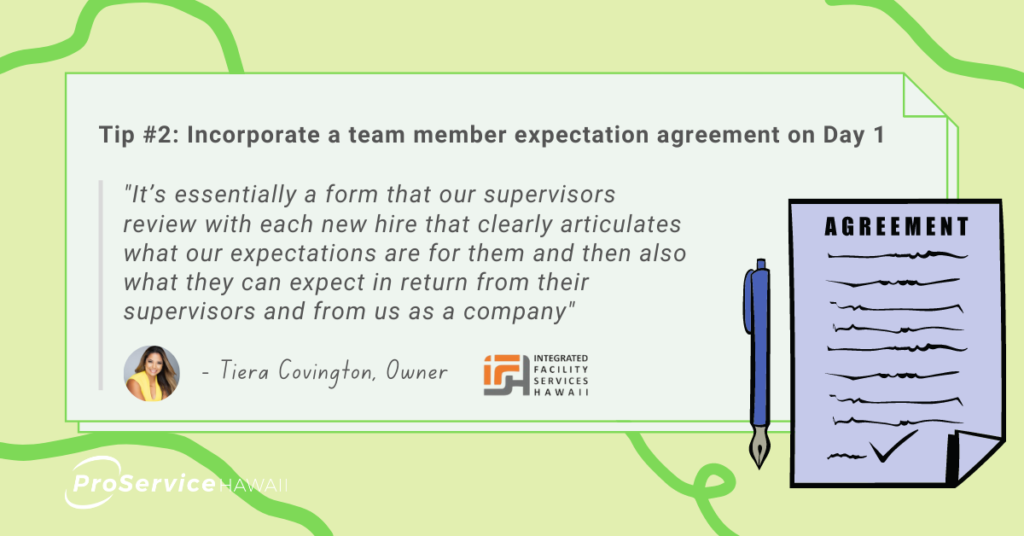
3. Check-in with employees after their first 30 days
It doesn’t stop there. Tiera adds that this conversation is ongoing and picks up 30 days later with a check-in conversation with a leader. Tiera’s team asks questions such as: Why did you decide to join us? What are your career goals? How have things been going during your first month? How has your training experience been? Do you feel like you're belonging to the team? Are your duties clear? “We will share this information with the whole leadership team because we're all part of their career growth and when what’s expected of them is clear, it eliminates confusion, motivates performance, and sustains employee morale,” Tiera adds.
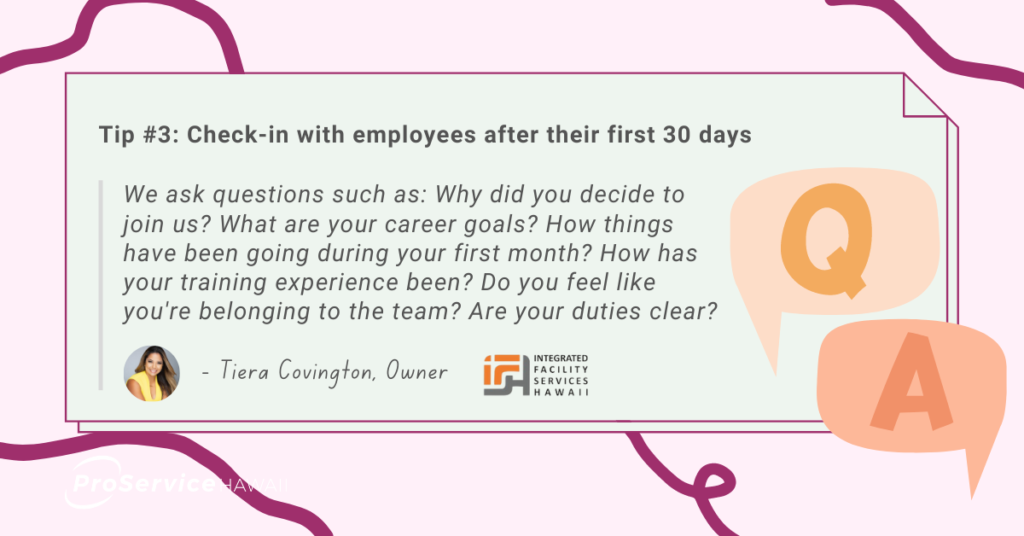
4. Continue the conversation quarterly
Checking in with employees is not a one-and-done thing for Tiera. During her conversation with us, she emphasized the importance of very clear communication on an ongoing basis. “After their initial 30-day check-in, our supervisors meet with employees regularly on a quarterly basis,” says Tiera. “And it’s not just a simple conversation,” she adds. “It’s a 30-45 minute 1:1 conversation that’s really thorough. We ask about what’s working (and what’s not working) in three main areas: core values, our quarterly goals, and their unique role. The purpose of these conversations is to bring out all the different things that maybe they wouldn’t say on their own but we want to know so we can best support them and meet our goals,” says Tiera. This connectivity between supervisors and employees is part of that secret sauce and employer “stickiness” we think is an important factor in employee engagement and retention.
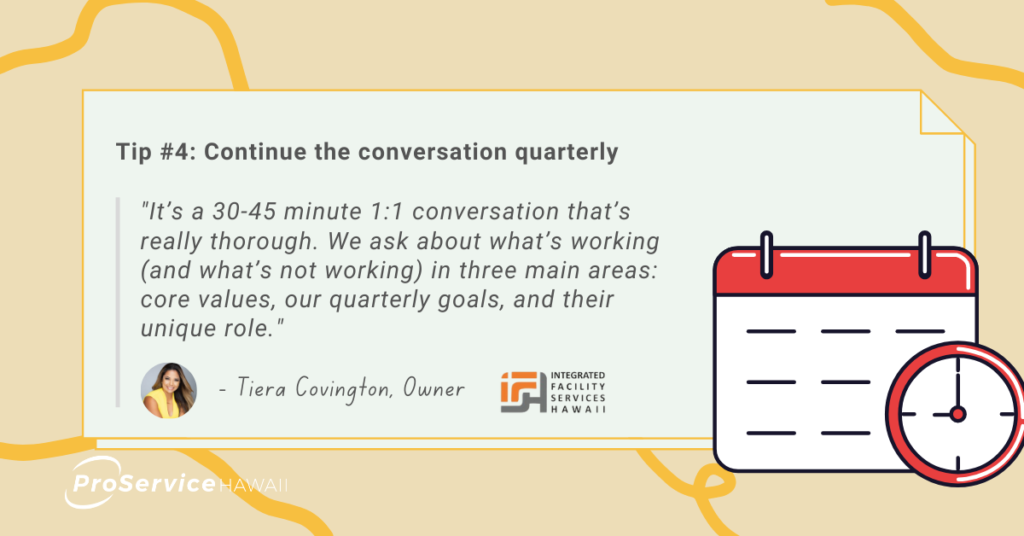
Closing thoughts
We really appreciate everything Tiera shared with us, especially how she’s prioritizing employee engagement conversations around performance at every stage of the employee lifecycle. Being able to manage and deliver this type of purposeful employee onboarding experience from day one is no easy task but the passion, vision, and concrete steps Tiera has taken are truly impressive.


